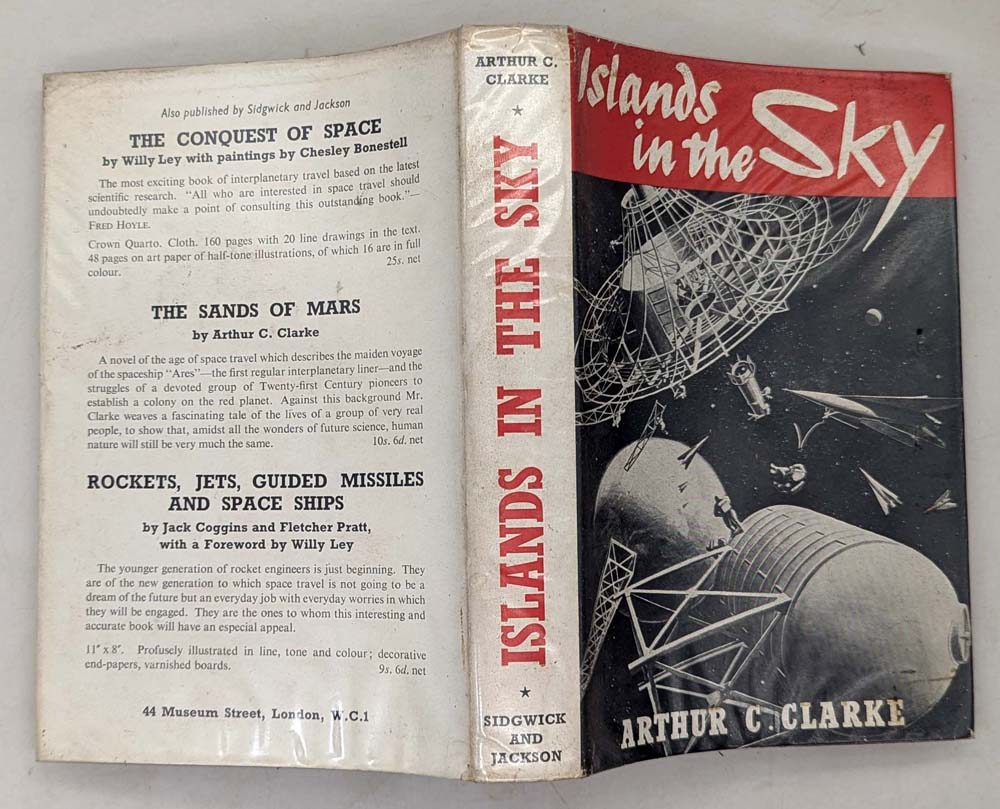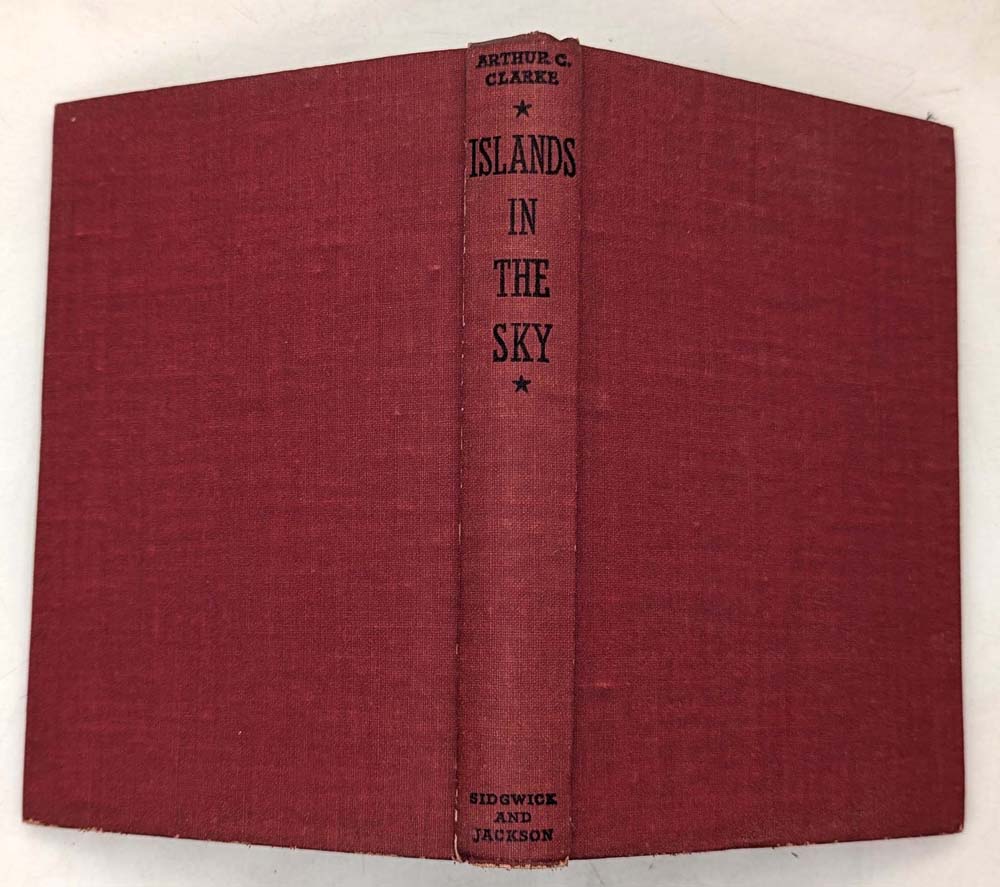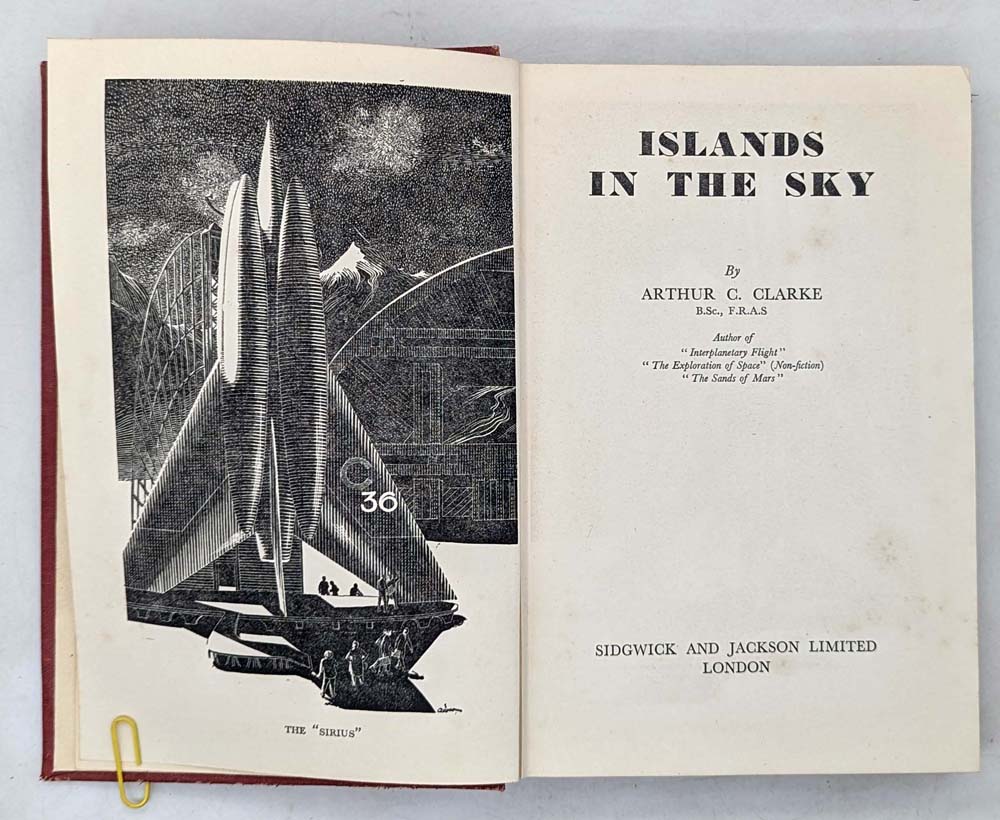Islands in the Sky by Arthur C. Clarke, first published in 1952, is a classic young adult science fiction novel that blends adventure with scientific imagination.
The story follows Roy Malcolm, a teenage science enthusiast who wins a contest and is awarded a trip to the Inner Space Station, a massive satellite orbiting Earth. Once aboard, Roy is immersed in the fascinating life of spacefarers and experiences firsthand the mechanics, challenges, and wonders of living in microgravity. As he explores the station and meets its crew, he also journeys to various outposts in space—including visits to the Moon and other orbital platforms—learning about humanity’s early steps into space exploration.
Written during the early days of the space race, Clarke’s novel is grounded in plausible science and educational in tone, offering young readers a glimpse of a possible spacefaring future. It reflects the optimism of the era about human progress and space technology, and it emphasizes curiosity, knowledge, and cooperation.
Though aimed at younger readers, Islands in the Sky showcases Clarke’s trademark clarity and visionary imagination, making it enjoyable for adults as well.










